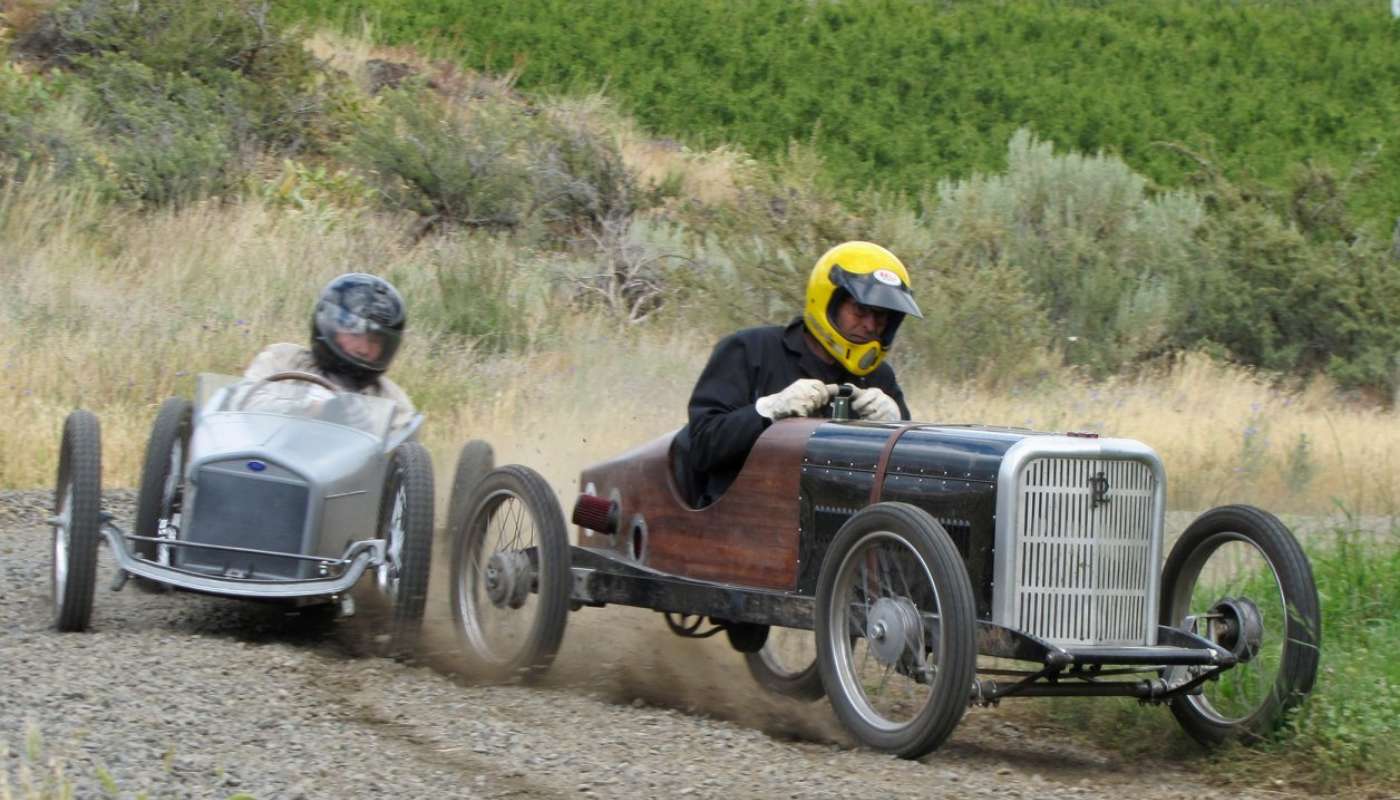
Cyclekart Racing is a Grassroots Grand Slam
By Dean Larson
Photos courtesy of the CycleKart Club forum members Steve Vinson, Valore Simmons, Albert Lies, Justin Tremain, Rick Eggers, James O'Donnell and Dave Dupaquier
Let’s face it, racing is too damn expensive. Take a quick poll among your car guy friends as to why they’re not racing, and we’ll bet their answers are time and money. Special racing classes like Spec Miata bring things back down to Earth, but they’re still not the most accessible. It’s a little tough to imagine your average-guy neighbor with three kids finding the time, space and cash for a real race car isn’t it?
24 Hours of Lemons events are some of the most accessible forms of motorsport, as the cars are (ostensibly) bought and prepared for $500 or less. But even Lemons has a long list of rules and required equipment, and a comprehensive tech inspection as well. So what do you do if you’re an average Joe who wants a little friendly automotive competition, all while while maintaining your family life, garage space, homeowners association and bank account? The answer is cyclekart racing, a fun and lighthearted auto sport that you can compete in for less than $1,500.
Cyclekart racing has gone worldwide, with dozens of sanctioning bodies with their own rules and practices. But there are a few common themes across all cyclekart racing, and those emphasize fun and creativity in constructing your own vintage-themed kart.
Vintage, in this case, harkens back to the 1910s, ’20s and ’30s, when cyclecars were a popular form of motorsport bridging the gap between motorcycles and motorcars. These stripped down, lightweight cars were accessible to the masses and simple to work on, and it didn’t take long for formal, and informal cyclecar races to spring up. Unfortunately WWI, and the explosion of automobile technology in the following years, rendered cyclecars obsolete, and many automotive enthusiasts have never heard of them, much less seen one.
In the present day, the essence of cyclecar racing has found revived purpose among the scores of automotive enthusiasts looking for cheap and nostalgic racing action. Essentially grown-up go karts, cyclekarts play off the cyclecar style while employing easy-to-find go-kart parts and grassroots ingenuity. Most karting organizations base their karts around the Stevenson Formula (see bottom of page), after the departed CycleKart creator Peter Stevenson.
The basic parts of the formula consist of a chassis of three-inch main rails with cross bracing, a four-stroke single-cylinder engine and basic go kart steering and braking components. The engine of choice is the 6.5 hp, 200cc Honda GX200, or a suitable substitute. (We found a 6.5 hp Predator engine from Harbor Freight for $135, but you'll want to check with your local sanctioning group to ensure legality.) Power is transmitted to one rear wheel by a torque converter, consisting of a drive clutch, a driven clutch and a belt. For most kart builders, the Comet TAV-30 is standard.
A tubular axle with 24-inch leaf springs is used up front, and a solid axle is rigid-mounted in the rear. Engines must be rear mounted, with one driven wheel while the other handles braking functions. Wheels are sourced from small motorcycles or mopeds, and must be 17 inches in diameter. Braking is handled by a mechanical disc on a single rear wheel, and steering parts are standard go kart items. Many sites point to azusaparts.com as a good source for standard go-kart gear.
While the cyclekart organizers place a great deal of importance on your kart’s mechanicals, the standardized formula is meant to emphasize creativity, especially in the bodywork. Employing the use of sheet metal, composites or wood, builders are tasked with constructing a body that accurately reflects the style of original cyclekarts. Any design reflecting pre-WWII cars, or any adaptation there of, is fair game, and you’d be shocked by some of the finished products.
"I remember being very intimidated at the start of the build, I had never welded or worked with aluminum sheet metal," says cyclekart racer Steve Vinson. "Now after building my first kart, I feel like I can do just about anything. I learned how to weld and how to fabricate, I also learned how to form aluminum panels using an English Wheel. I am by no means a professional at any of these skills, but for building a cyclekart, you don't have to be an expert, you just have to be willing to try."
Some karts are basic bare-bones builds with a functional sort of beauty, while others are intensive creations making use of basic monocoque and superleggera principles. At larger karting events, you’ll see a wide variety of inspirations reflected, from streamliners and European exotics, to early American speedsters and 1930s hot rods. To cyclekart racers, 70-80% of the sport is preparing an original kart that you’re proud of. So important is this aspect of the cyclekart sport, that many sanctioned events include a concours, where participants’ karts are displayed and judged for creativity, ingenuity and presentation. But don’t be fooled, sanctioned cyclekart events are much more than a handful of parade laps.
Cyclekart races take place on a variety of surfaces, from tarmac to unprepped dirt, and often a mix of the two. While its fun that’s emphasized over cutthroat competition, the racing does get pretty serious with plenty of passing, and even the occasional wreck. Don’t let the go-kart origins fool you; some of these karts are capable of topping 50 mph within the rules.
But there's no time for podiums, sore losers or reckless driving in this sport, and you’ll likely gain more respect for building an awesome kart than for crossing the finish line first. And that’s the type of attitude that keeps this grassroots sport fun. As soon as winning brings any sort of glamor or overwhelming attention, there will be plenty willing to bend the rules to take the checkered.
"The racing is not too hardcore; Gentleman’s Racing is the theme, and aggressive driving is discouraged — this is all for fun," racer Steve Vinson says. "Racing around the streets of a historic town, or blasting through an orchard with a bunch of other cyclekarts is an absolute blast. If you don't have a "CycleKart Smile" while driving, you’re doing it wrong!"
If you’ve made it to this point without opening a new tab to search for local karting organizations and cyclekart parts, I commend your reserve, but also suggest you check your pulse. I suspected the odds of a cyclekart organization here in Wisconsin were slim, but I did find a dozen individuals who were already on the forums, discussing events here in America’s Dairyland. And after that discovery, I have to wrap this up quick before I end up ordering these parts in my Amazon cart…
"One of our favorite phrases in the club is: design, build, race and repeat, as many of our members have built more than one kart," says Steve Vinson. "These are simple, fun little machines that offer a ton of fun for very little money."
Stevenson CycleKart Specification (Taken from the CycleKart Club forum)
A one-seat car using Honda 17" x 1-3/4" or 2" rims, 2.50" x 17" tires (2.75" have been used on the Alfa), a 38" track, wheelbase as close to 66" as the aesthetics of the car will allow (err on the shorter side for more abstract cuteness and general attractiveness), weight no more than 250 lbs, and powered by a 200cc, single cylinder, 6.5 hp Honda OHV engine (the GX200). A CycleKart should not cost more than $1,750 to build in 2001 dollars. This is to avoid "spending races" where people start hiring out parts and making things too nice; we're not making show cars, and an element of scrounging adds to the fun.
Measurements and Notes:
* Styling - 1920s and 1930s race cars, maximum pre WWII. Make it look good. Performance is secondary
* Overall Maximum Length - 98" (2490mm)
* Overall Maximum Width - 40" (1020mm)
* Wheel Base - 66" (1675mm)
* Track - 38" (965mm)
* Chassis Frame Rails – (2) 1" x 3" (25mm x 75mm) steel (1/16" thickness is sufficient)
* Body Work – 1/4" (6mm) plywood and 3/4" (18mm) plywood monocoque box, or metal work
* Body Width - 14" (355mm) wide at front axle, 20" (510mm) wide at seat back
* Front Axle – 1-5/8" (41.5mm) O.D. tubing, dropped to accommodate the leaf springs
* Rear Axle - 1" x 36" (25mm x 915mm) long axle
* Front springs - 24" x 1-1/4" (610mm x 38mm), 2 leaf, 1/2 elliptic
* Wheels and tyres – Honda 17" x 1-3/4" (177mm x 44.5mm)
* Minimum Weight – N/A
* Maximum Weight - 250 lbs (113.6 kg)
* Engine - 200cc, single cylinder 6.5 hp Honda OHV engine (GX200)
* Engine Location – Rear
* Drive - Comet TAV-30 (or similar) unit to one wheel only
* Drive Chain - #40 chain, 72 tooth main sprocket
* Braking – Single rear wheel by mechanical disc. No front brakes allowed
* Variation – Adjust all or any specifications above as required or desired
There is no lower weight limit, as we feel that this is a perfect place to "cheat". Lighter cars will perform better, will also have better braking (using the same brakes) and the structure will be loaded less heavily: All good things. There's a natural lower weight imposed by the strength of materials used, but it would be fun to see what could be done. Lighter machines are more prone to breaking, so please make safety your priority, and keep in mind that you'll spend more time fixing things than others might. It's all part of the fun of CycleKart design.


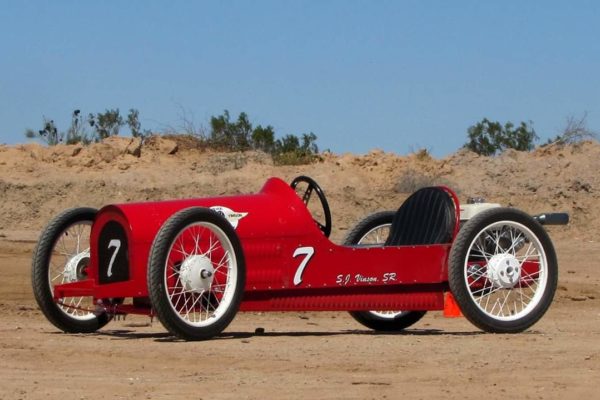
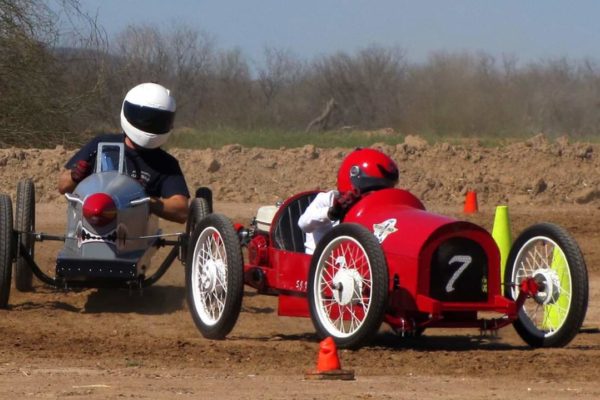
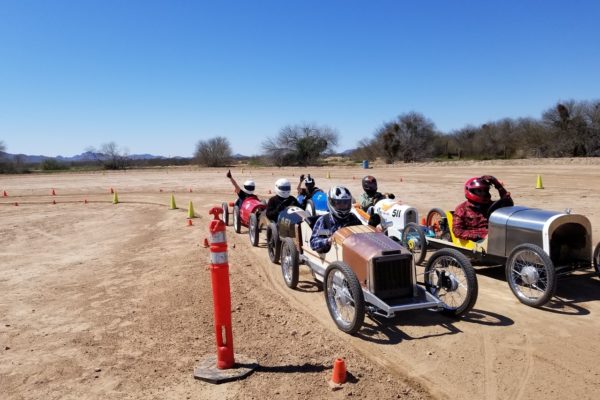

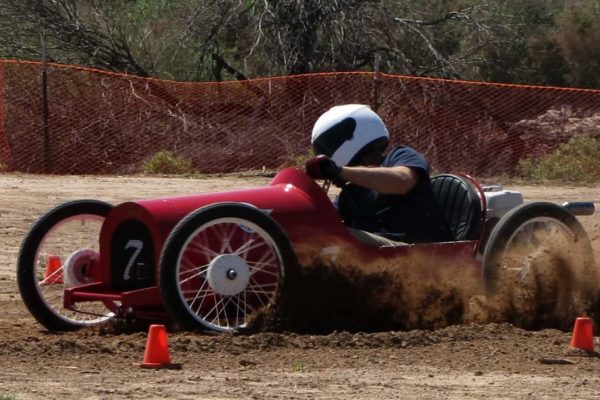
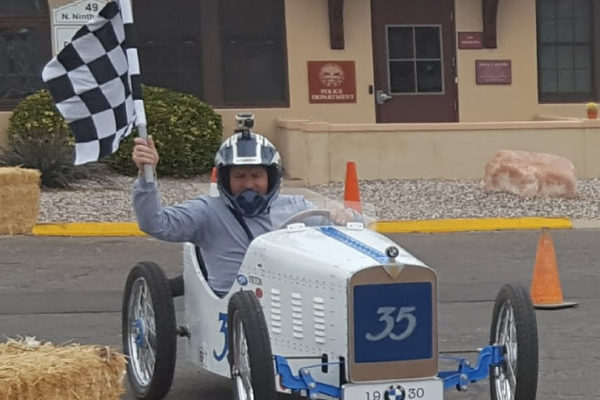
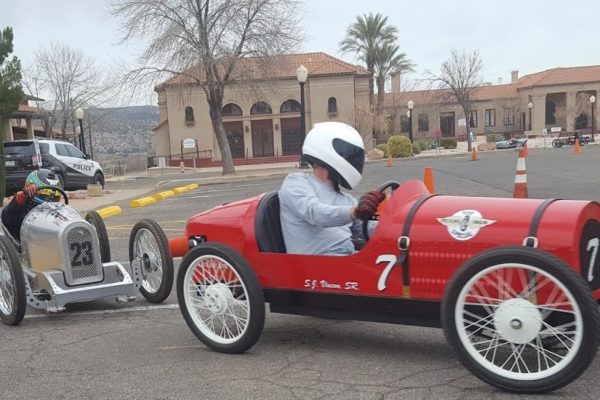

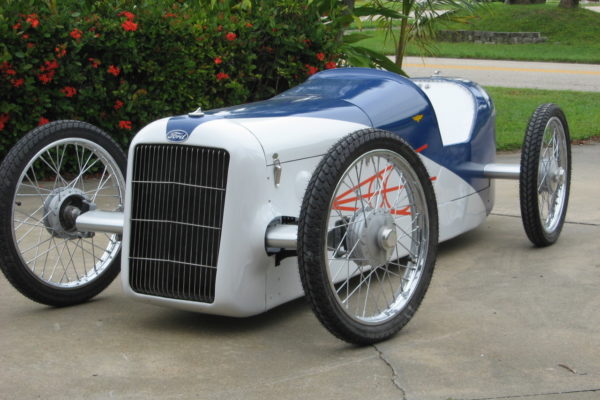
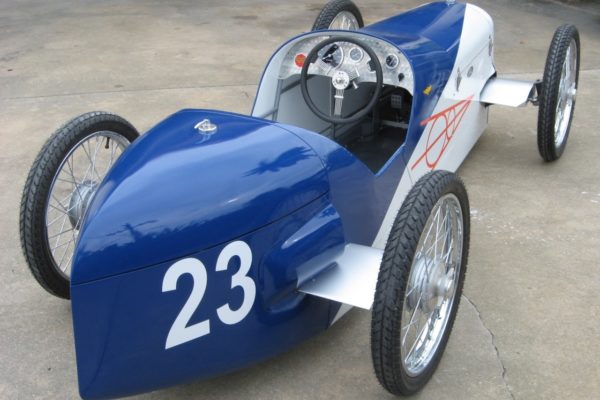
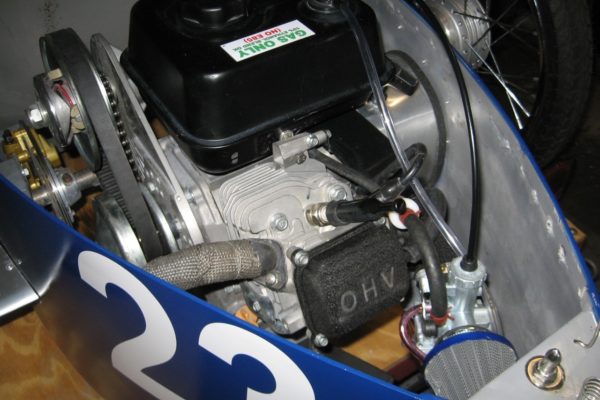
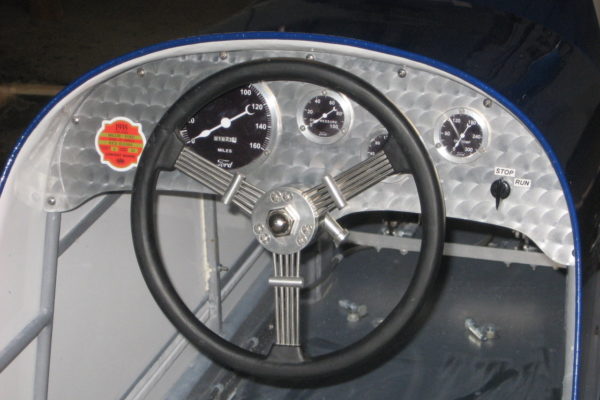
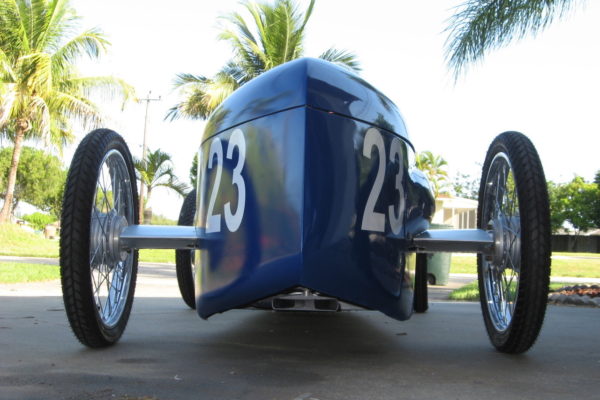
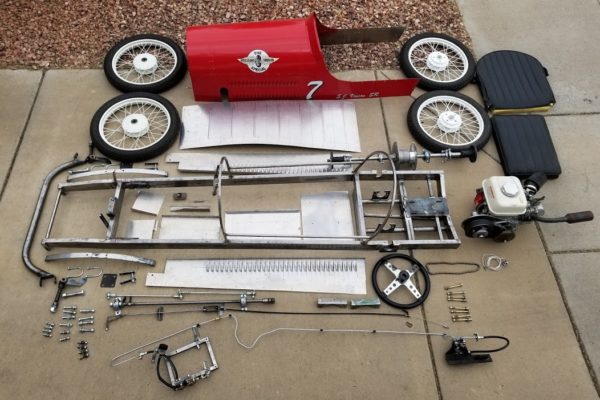
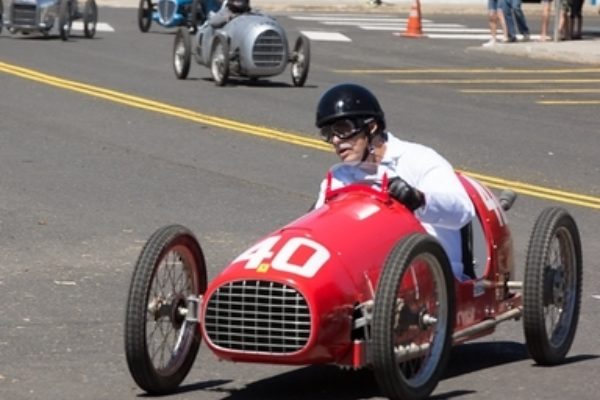
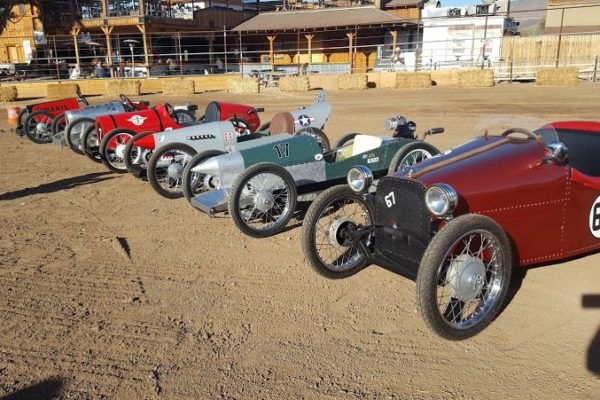
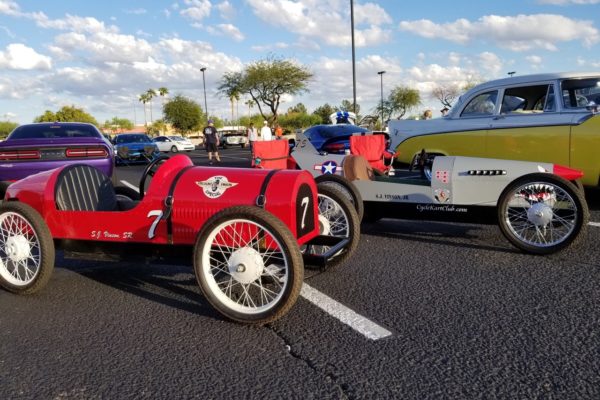

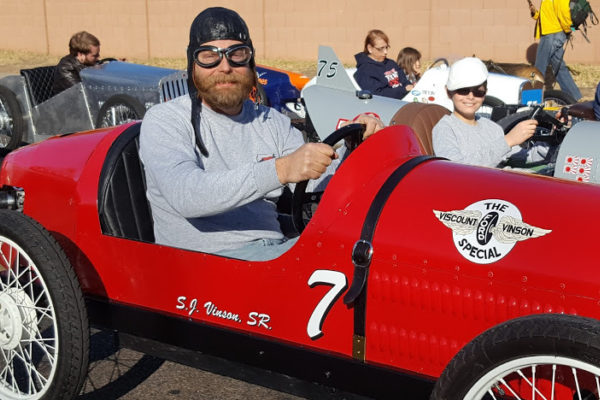
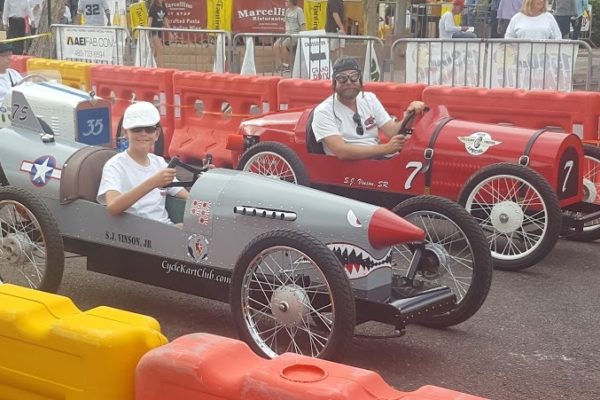
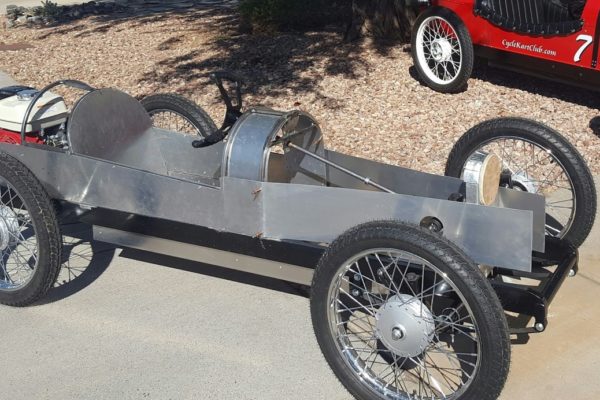
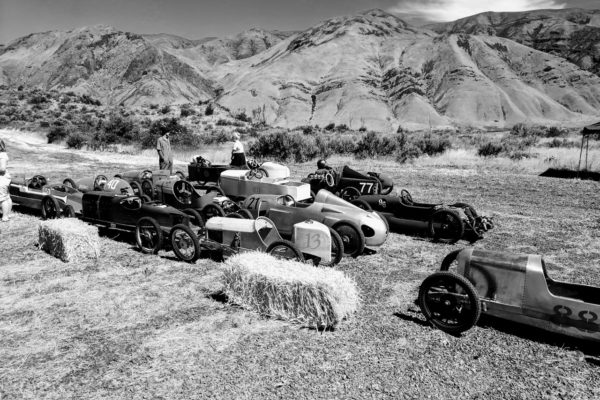
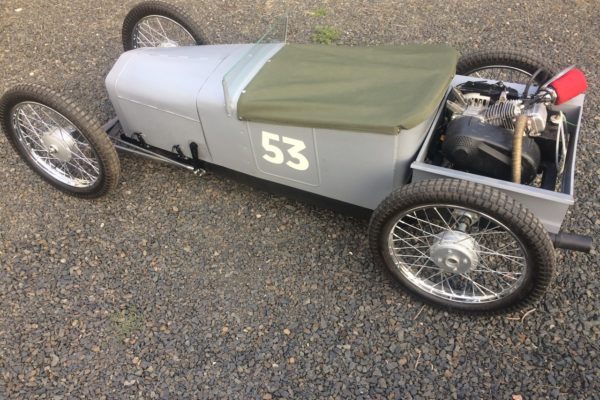
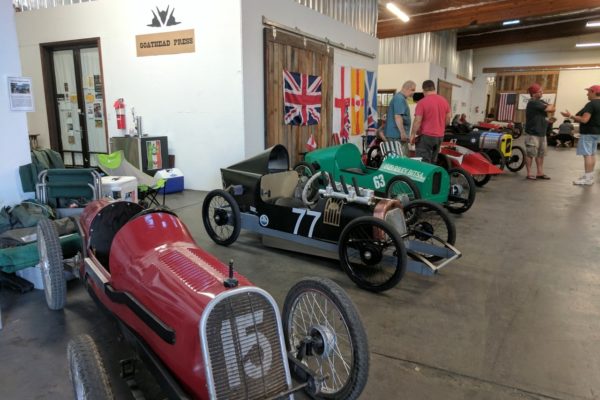
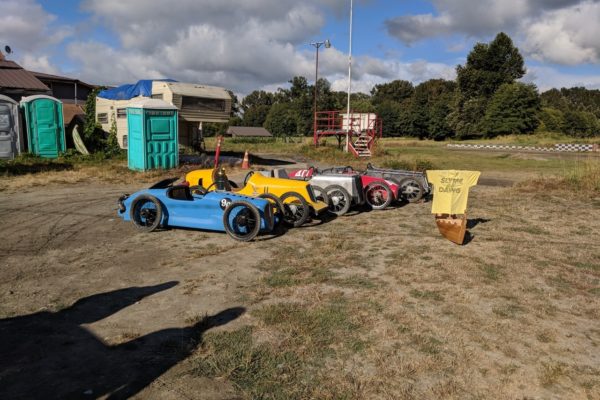
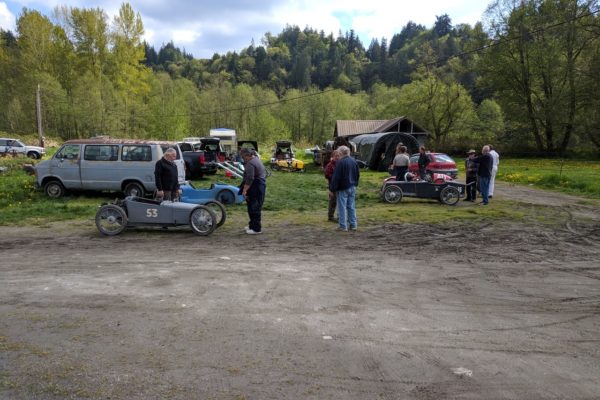
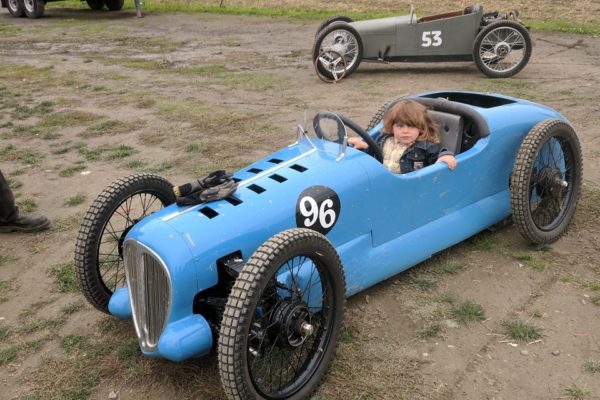
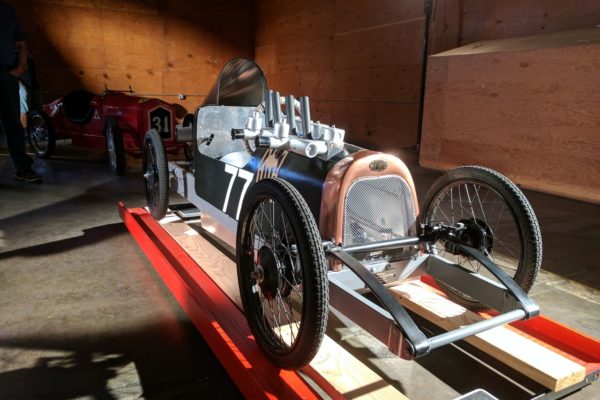
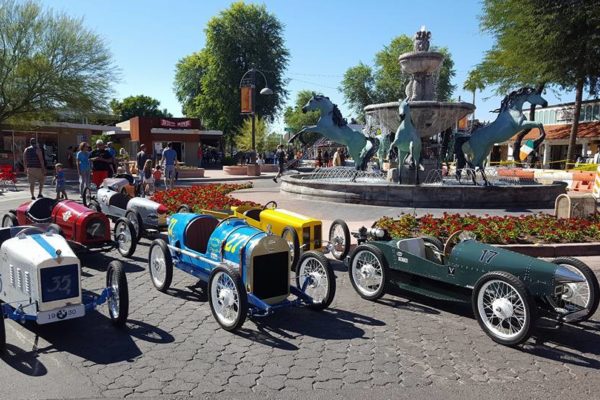
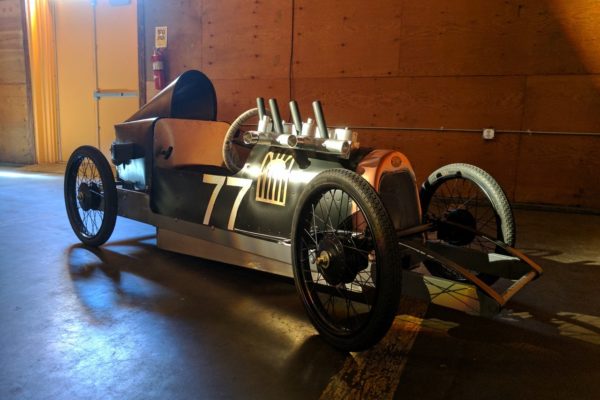
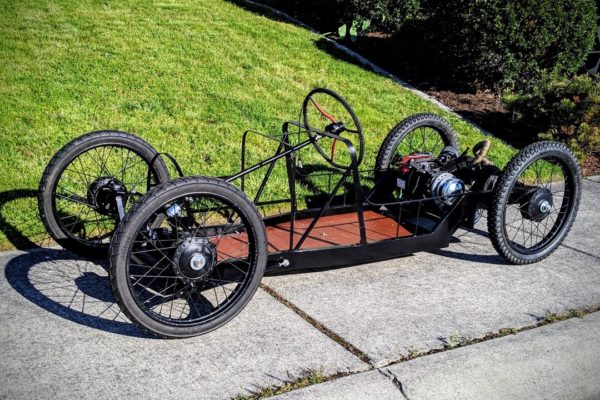
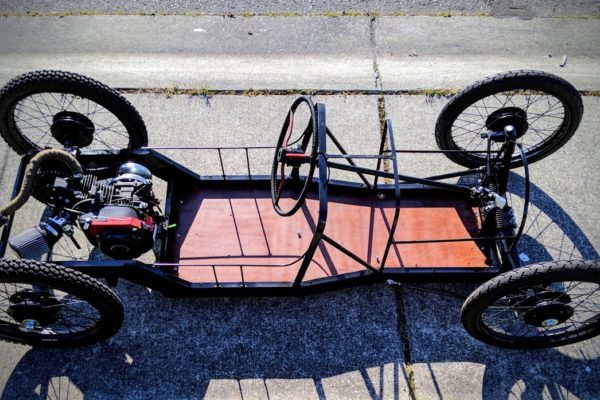
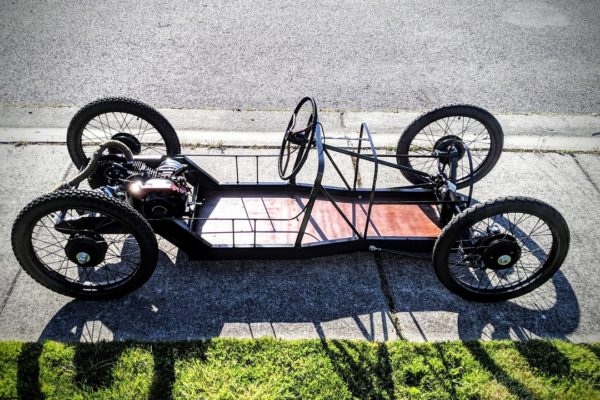
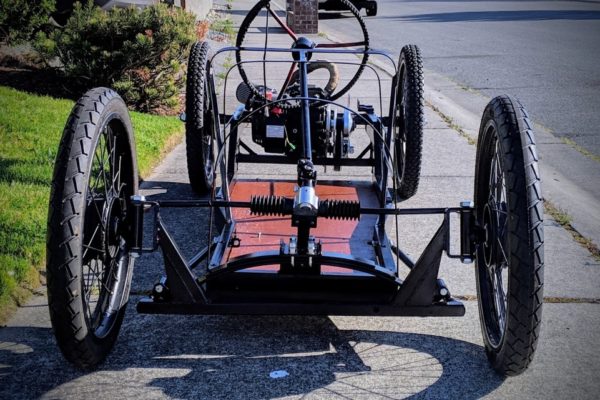
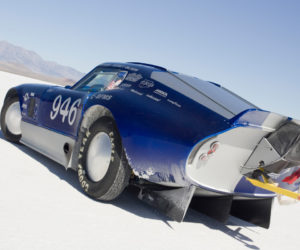
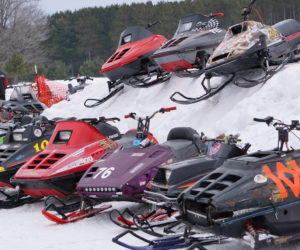
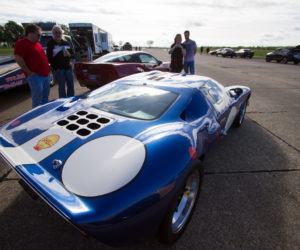
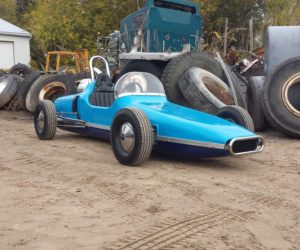




Comments for: Cyclekart Racing is a Grassroots Grand Slam
comments powered by Disqus